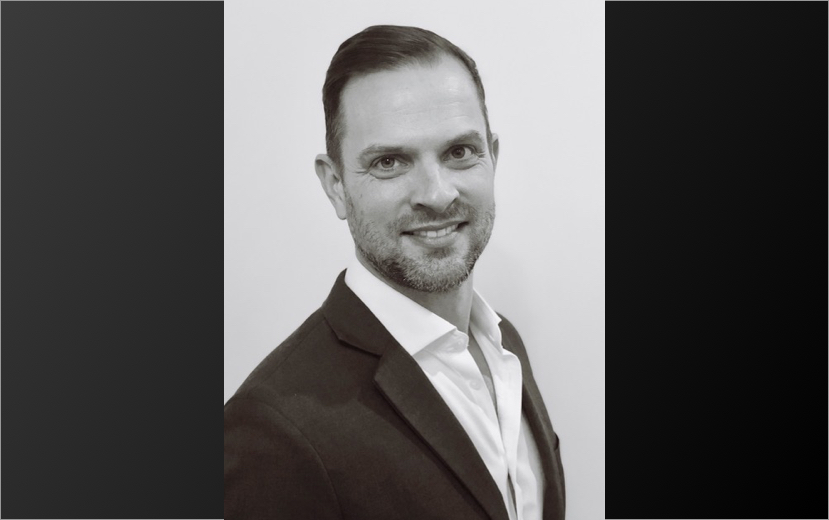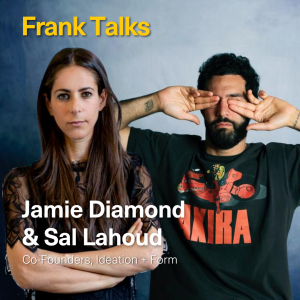In this week’s Frank Talk we speak with Cornell DeWitt. For over 20 years, Cornell has been at the forefront of connecting audiences and art. Since co-founding one of the first online art galleries in 1995, Cornell has also owned and operated an eponymous gallery in New York, acted as director of a major international gallery, curated exhibitions, advised private collectors, and dealt in the primary and secondary markets. Cornell has also served as Director of PULSE Contemporary Art Fair in Miami and New York, as Vice President of Business Development at Artnet, and as Vice President, Strategic Partnership at Collectrium, a Christie’s company. His latest project is Daily Plinth – the first platform dedicated to discovering and promoting video content produced by the art world – where he is co-founder and publisher. Because of Cornell’s extensive experience, in particular within the digital ecosystem of the art world, we are delighted to share his Frank Talk with you here.
What was your first job in the Arts?
I started in the arts in the somewhat-cultural-backwater of Boulder, Colorado around 1994, so I had to make it up myself – however indirectly, I basically ended up inventing a job for myself. Having little access to the global art world, my first job was launching one of the first online art galleries. As challenging as it is now, you can imagine how impossible it was to sell art online in 1995. So we quickly pivoted to a more “traditional” DIY strategy – renting temporary spaces, doing salons at friends’ homes, etc.
What was the most useful or important thing you learned at that job?
For my career: Be flexible. For the art world: selling art online misses the point of art.
Tell us a little more about yourself. When did you realize you wanted to pursue a career in this industry?
It truly was a happy coincidence – I was just out of college, racing bikes and working in a coffee shop when I started working on the online gallery. It had never even occurred to me to work in the art world, but once I started to get into it, I loved it and it made sense – I’d always been friends with artists, and had been fortunate to have some amazing experiences with art museums in Houston and around the world. So when I realized I could maybe make working with art and artists, and doing interesting new things like the web into a career, it just clicked. Racing bikes was HARD.
What do you do now?
Well, I still like to ride my bikes as often as I can, and hanging out with my kids, grilling in the back yard… oh… you mean for work? I do a lot of different things, mostly advising a variety of art businesses in strategic planning and business development. Sometimes full time, sometimes as a consultant. But my main project right now is Daily Plinth – it’s the first platform dedicated to discovering and promoting video content produced by the art world. It’s interesting for my career to come full circle, nearly 25 years on, to launching my second online venture. I now have a FAR better understanding of what the web is well suited for, and how an online platform can best support the needs of the art world. Everybody should subscribe to our email and follow us on social media.
Where are you from?
I grew up in Houston, then lived 8 years in Boulder, and now have been 21 years in New York. Only about half of New York City’s residents were born in New York, so between that shared experience and my longevity here, I guess you could say I’m a New Yorker.
What is the arts community like there?
Houston has a pretty amazing arts community, and very unique – distinctly different from, say, that of Dallas. The community in Houston has an almost outsider-ish feel to it, as it really doesn’t have much truck with what is going on in the larger Art World. It proudly does its own thing, does it well, and supports itself. I still have friends from growing up who are closely involved in the scene there, so it is always great to follow and support what is going on there.
Specifically, the Menil collection – which opened when I was in high school – I believe is one of the world’s greatest museums, and had a great impact on my views of art. The great Richard Jackson had an exhibition there right when it opened that I distinctly remember blowing my high-school mind. Almost two decades later, it came full-circle when I had the incredible privilege to work with him on an exhibition at Yvon Lambert in New York.
Has where you come from shaped what you do in the arts today?
I think I continue to take a very skeptical, even outsider-ish view of things in the art world. I remain very difficult to convince regarding trends – in art and in the commerce thereof – and the people who chase or traffic in them.
What is the best piece of advice you can give about working in the art world?
This is perhaps more of an observation than advice, but that tends to be how I operate… I’m always perplexed – exasperated, even – by the strange dichotomy in the art world of resistance to change on the one hand (e.g., much of how galleries and art fairs do business), and the knee-jerk embrace of new things without thinking them through much (e.g. the World Wide Web is going to save the art world! No, wait, Instagram’s going to save the art world! Wait, hold on… blockchain is IT!). I’m constantly amazed at how uncreative the art world is, in terms of how it operates.
I guess my advice would be to be open to – and even push – change, but try to be smart about it.
What is one of your greatest accomplishments in your career so far?
I’ve done so many different things in my career, it’s hard to point to one thing as some sort of grand culmination – there have been different high points in many of the different roles I’ve held. Plus, I tend to value different metrics anyway. In the big picture, I’d definitely say that my greatest accomplishment has been to balance my personal and family life with my work life. That being said, I have to say I think Daily Plinth is pretty brilliant. It’s great to be back in the trenches of co-founding my own company, with something that is simple, innovative, and in support of the art community at large. Our mission is to deepen people’s engagement with art, at a time that is dominated by Instagram and art fairs.
What has been a challenge for you?
Not getting so exasperated as to throw in the towel and move to a cabin in the mountains.
What is something you do every day at work?
I believe that the key to focus is distraction. Studies show that people focus better if they are allowed distraction at regular intervals, rather than putting themselves in a constant battle to stay focused. I’m also a bit of an information junkie. So I make sure that I allow myself distractions – usually reading news, or something educational, but sometimes filling out questionnaires – in my work, but I try to make sure that even those distractions will be beneficial, in terms of being able to make informed decisions and give relevant advice. The trick is to make sure you get back to work.
What is one of the weirdest things you have had to do on the job in your career?
Oh, gosh – I did so many more weird things in my career before I started in the art world, that the art business has been very staid by comparison. That being said, I’d have to say that when I was working with Richard Jackson, installing a work with him at Art Basel Miami Beach involved me becoming much more intimately knowledgeable with the installation of toilets and bathroom stalls than I ever thought I’d become. Shout-out to all the art handlers, installers, and artists’ assistants out there, who have the most interesting jobs in the art world.
What defines a good employee? What defines a good boss?
They say practice makes perfect. But what if you are practicing something wrong? Perfect practice makes perfect. I don’t really care if an employee takes longer than I might have expected or hoped for to learn something or to figure out something. What is important is that they get it right.
Related to the above, they also say that if you want something done right, you have to do it yourself. A good boss can lead/instruct/support an employee to get to the point where the employee can do things right.
I would add a third part to this question and say that the best employee–boss relationship is collaborative.
What do you think makes a person hirable?
Exhibiting that they can balance being willing and able to bring fresh ideas (and frankly, in the hiring process, I’m less concerned about how good the ideas may or may not actually be), with a pretty solid understanding of how the company currently operates and/or what the role entails. I’m always flabbergasted when I’m interviewing someone, and I ask them (as I always do), “Tell me about our company,” and they don’t have a good answer. And just be a decent human being – see below.
What is your advice to making yourself stand out in your workplace?
To paraphrase/butcher Niebuhr, being willing and able to step up when it is time to step up, step back when it is time to step back, and the wisdom to know the difference. Plus, see below.
What are things you can do proactively boost your CV?
Be interesting, and exhibit a willingness to learn, grow, evolve, etc. All other relevant work experience being the same, I’d be far more likely to hire someone (or support a colleague) who took online classes in political science, volunteers at a women’s shelter, and likes to compete in tough mudders, than a person with an associates degree from Christie’s, volunteers as a docent at MoMA, and has never missed an Art Basel Miami Beach. Not that there is anything wrong with any of the latter credentials or that they would be any kind of hindrance, but I get it – you like art, that’s why we’re all here. Try to be interesting.
Are there any tips you can give people entering the workforce?
I know a lot of people answering this question have said things along the lines of ignoring the so-called glamour of the art world, but yeah, you gotta be willing to get up every morning, put on your pants, and do the work that needs to be done. Anyone who is more interested in going to the latest Gucci/Artsy party than figuring out what Artsy actually does should find a different line of work.
What is the best exhibition you have seen in the last year?
By the time this article is published, I’m going to assume it is going to be David Wojnarowicz at the Whitney.
If you could own a work by 5 different artists, who would be in your collection?
Jasper Johns
Cy Twombly
Eva Hesse
Carol Bove
James Castle




